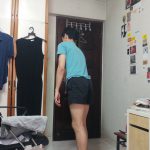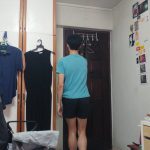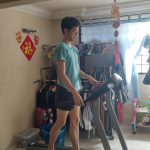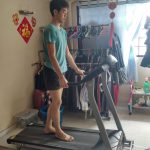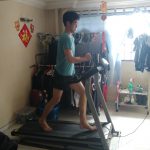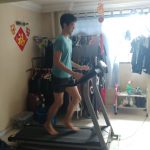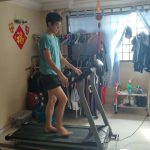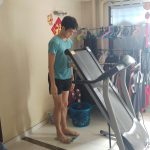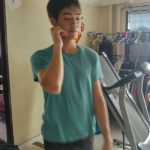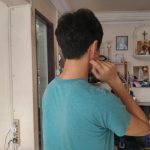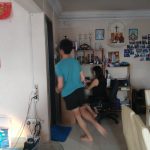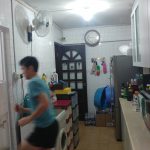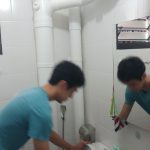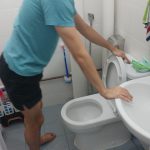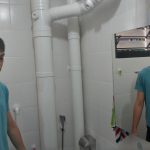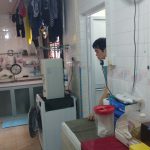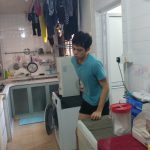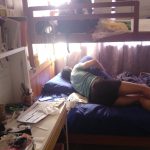As I began my journey into my final year in the School of Art, Design and Media, my heart gravels with great worry for my final year project and my upcoming thesis paper.
While I had been doing visual communications for the past 3 years, I certainly did not see that as a career goal. My interest always laid with artistic practice and examining various curatorial approaches to artworks. Oddly enough, I wanted to melt my various interests together. A story I never told many people, was that I originally came to college because I really believed I wanted to be a visual designer. It’s crazy how your mind can take you places and make you believe in things that you could never fathom. Of course, what made me snap out of it, was the fact that I could not marry art and design seamlessly.
Thinking about it in relation to my final year project, I decided to try and design a visual system to digitally translate exhibitions that were happening physically, online. It was a huge task. I was not used to designing frameworks and systems, and my coding skills were abysmal. I began observing Google Arts & Culture for a start. Google Arts & Culture details artworks from all over the world and aggregates them into specific data sets for categorisation. This means you get to see works based on their: colour, medium, topic, era, or country. They also tried to translate various exhibitions into webpages to show the curator’s writing as well as integrate their high fidelity scans into their virtual exhibition.
At this point, I was wondering “why is no one integrating this during their pandemic show”. From there, I decided to work with my thesis supervisors (Ms Candice Ng & Assoc Prof. Laura Miotto) to design a possible framework to digitise an exhibition and try to maintain the integrity of the artist’s intentions.
Upon further conversation with Professor Miotto, it was quite amazing to see how she moved my mind from doing something so massive and to look at redesigning the online experience. Originally, I was looking at creating a massive framework that would probably be too large for an undergraduate thesis project. In the end, she told me to focus on one exhibition, and be that expert of it.
None the less, I scaled down and chose the exhibition Time Passes that was showing as part of the Novel Ways of Being programme by the National Arts Council in response to the on-going COVID–19 pandemic. Through my consultation, I narrowed down my scope and looked at the intangible experience that was designed in the physical exhibition and how do I reinterpret and translate this exhibition digitally.

Looking at the exhibition and talking to the curator, Samantha Yap, I noticed 3 main points in the exhibition that were vital to experience itself: Sound, Colour, and Distance.
Sound
The sound is the sound leaks in the exhibition. From large scale immersive video works, the sound of the air-conditioning, and even the sound of footsteps, walking, and talking. These sounds contribute to an individuals experience within the space itself and it affects how you view the artworks – whether or not the sound comes from the artwork itself. You are either irritated, calm, or even excited depending on the atmospheric sound, and this sound is vital in designing the experience. That’s also the reason why people enjoy Berlin techno for its deep drone sound, creating a ritualistic moment as you get lost in the sea of the music.
Colour
The colour of the space sets the mood. Sometimes its too cold, too white, too wooden, too raw. The atmospheric colour changes the mood of the artwork as well. For the modern art institution holding contemporary art, the walls and the flooring just did not fit. You usually see the ornate frames in a modern art institution against the parquet flooring. While in contemporary art, you usually find yourself in a white cube. Figurative and literal white cubes host works to stop you from being distracted by the atmosphere of the space. This hint of atmospheric colour in the exhibition was very important to this particular experience. It changed the tone of the artworks and the new digital framework had to emulate this.
Distance
Speaking to the curator, she notes to me the specific placement of certain works. The distance, the dividing walls, the ones you see at first sight. The artworks are intentionally placed to give you breath to think about the others and some to not interfere and distract by others. It is only through space in the physical world can this take place, and it is only proper to find a solution to design a digital exhibition that showcased this distance.
What’s next?
It is only through analysing the lack thereof various other solutions in the existence that I realised the need to look for or to design a solution that encompassed sound, colour, and distance and yet contained the elegance of exhibitions on Google Arts & Culture (here’s an example).
While my own design is still in prototype, I do hope future exhibition makers think about designing these online experiences with sound, colour, and distance in mind. Perhaps we could one day share these intimate viewing experiences globally with the use of these traits.


























































